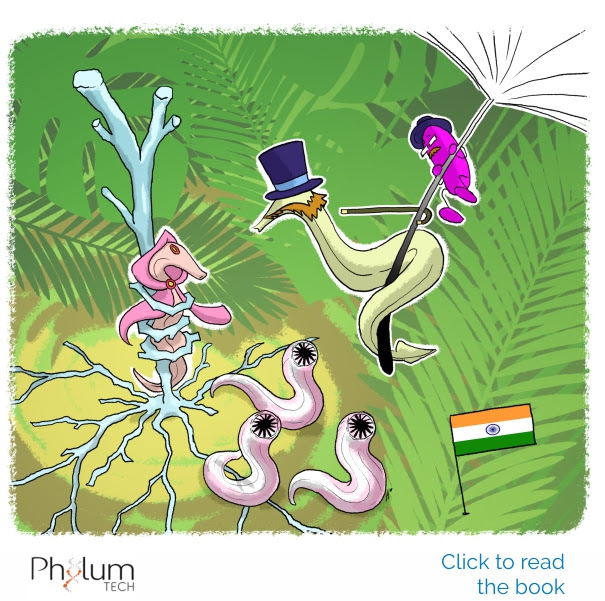
“Eu” worms have the extraordinary ability to prey on other nematodes including
C. elegans, whereas “St” worms are strictly bacteriovorous

Pristionchus pacificus was originally studied as a comparative species to Caenorhabditis elegans. Both species are easily reared in the laboratory on bacterial lawns and have similar anatomies and life cycles. While most Pristionchus spp. were only obtained in certain geographic areas, P.pacificus is one of a few cosmopolitan species. It has now been found in Japan, China, the USA, Bolivia, South Africa and occasionally in Europe, Madagascar, India and Bali. Pristionchus nematodes cannot only feed on bacteria, they have denticles in the buccal cavity that are used to disrupt the hyphae of fungi and/or cuticle of other nematodes (Perry & Wharton BOOK 2011). Many P. pacificus isolates are found associated with beetles and may have a necromenic relationship wherein the nematode waits for the beetle to die and then feeds off of the rotting cadaver and associated microorganisms.

Pristionchus pacificus shows major morphological and physiological adaptations on respect to feeding when compared with other rhabditids. It has two alternative and discontinuous mouth-form morphologies, the eurystomatous (Eu) andstenostomatous (St) forms. The Eu mouth form is wider and has a large claw-like dorsal tooth and an opposing right subventral tooth, whereas the St mouth form is narrower, having only a flint-shaped dorsal tooth (Namdeo et al 2018). Over the years, several genetic, epigenetic and environmental factors were identified to play a role in mouth-form determination of P. pacificus. Investigations have gradually resulted in the discovery of a mouth-form gene regulatory network (MF-GRN) that includes i) developmental switches, ii) at least two transcription factors of the nuclear-hormone-receptor family, and iii) their downstream targets. A proper understanding of the proximate developmental mechanisms is crucial for a full acceptance of developmental plasticity as an important mechanism for evolution.

